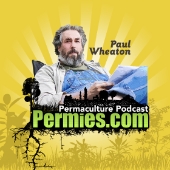
 1
1








Opalyn Rose wrote:
The Leonardo Rope Machine or a DIY Rope Machine are two ways to make what I think you are calling twine.
Please advise!
 4
4




Rope = twisting multiple strands of yarn/string/thread/twine together in a specific way - usually using a rope maker.
It requires very careful tension and control of the twist as it becomes a rope.
The method is similar to plying yarn, only with far more twist and excruciating control.
See the way they have a special jig for controlling the twist as it enters the rope?
https://youtu.be/NUHN3q6k24s
Twine - basically like a yarn made from roughly processed cellulose materials like bark, roots, leaves, or bast fibres. This can be very rough, usually prickly, and made quickly to do a job. This is made by twisting and plying like yarn, or can be made in a one-stage method where twisting and plying happens at the same stage as in the West Coast Cowichan first nations method for making twine out of nettle skin for fishing nets.
And of course... the big problem is the grey areas. The language is so old and used over such a large amount of space and time that there are variations and nuances to the meaning of each word depending on the location, century, and context it's used.
But that's the beauty of PEP - we're building it from scratch so we can choose which definitions we want to use.




Check out the plans to build your own charka-style spinning wheel from bicycle parts
Explore the intersection of permaculture, community, and the cycle of life at Herland Forest Natural Burial Cemetery and the Windward Education and Research Center




Nicole Alderman wrote:I chatted with R Ranson a bit about this. The crucial part seems to be with the PROCESS, not the size.
Rope can be made of various strands of yarn or thread or twine. The important part is making sure it is twined carefully and with the right tension (like with a rope-maker).
Twine is like 2-ply scratchy, rough, durable yarn. It could probably be more than 2 ply. The main part is that it's rough and durable, and not something you'd want to knit a sweater with. And it's not put under the careful tension and twisting that rope is.
Check out the plans to build your own charka-style spinning wheel from bicycle parts
Explore the intersection of permaculture, community, and the cycle of life at Herland Forest Natural Burial Cemetery and the Windward Education and Research Center




Check out the plans to build your own charka-style spinning wheel from bicycle parts
Explore the intersection of permaculture, community, and the cycle of life at Herland Forest Natural Burial Cemetery and the Windward Education and Research Center
 3
3











 5
5





|
Do you pee on your compost? Does this tiny ad?
Homestead Pigs Course
https://permies.com/wiki/365748/Homestead-Pigs
|







